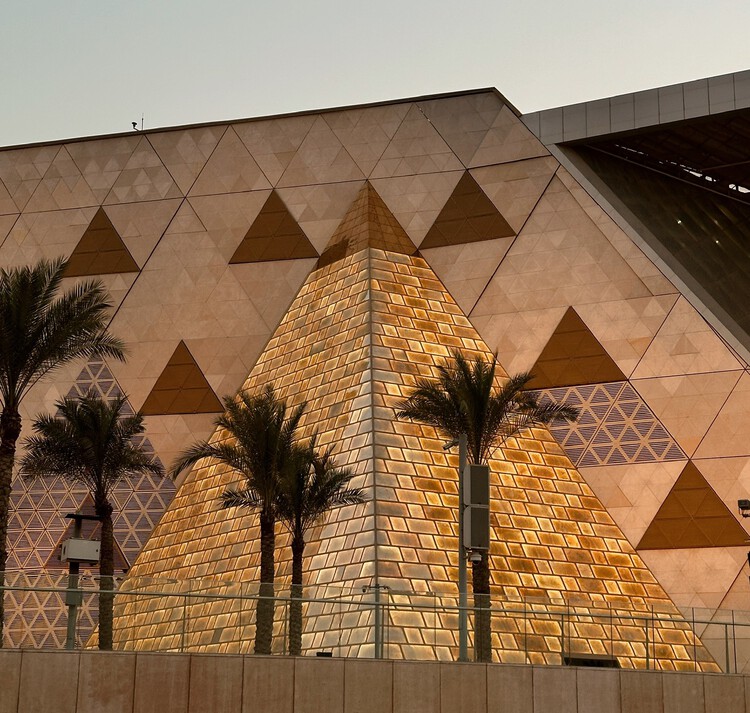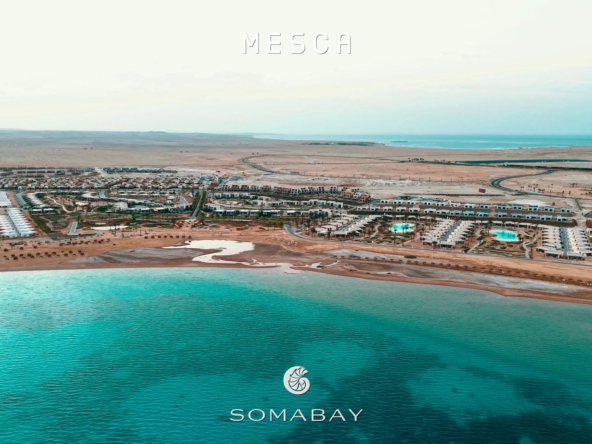The Dawn of a New Cultural Era
At the edge of the Giza Plateau, where the timeless silhouettes of the Great Pyramids rise from golden sands, a new monument has emerged — the Grand Egyptian Museum (GEM). Set to open fully to the public in late 2025, GEM stands as the largest archaeological museum in the world. It is an architectural and cultural masterpiece. It is designed to showcase Egypt’s ancient heritage in an entirely modern form.
More than just a museum, GEM is a living bridge between the past and the present. It is a place where 5,000 years of civilization meet cutting-edge design, sustainability, and storytelling. For visitors traveling to Cairo, Giza, or Egypt’s historic heart, this landmark destination promises an unforgettable experience. It offers an encounter with history on a monumental scale.
Where History Lives — Giza, Egypt
Strategically located just two kilometers from the Giza Pyramids and about 30 minutes from Cairo International Airport, the Grand Egyptian Museum sits in one of the most iconic cultural landscapes on Earth.
The museum’s site offers a panoramic view of the three great pyramids of Khufu, Khafre, and Menkaure. These can be seen from various vantage points inside the museum. This is a deliberate alignment that connects the modern world with Egypt’s ancient one.
Architectural Marvel: Designed for Eternity
The architecture of the Grand Egyptian Museum is as breathtaking as the treasures it houses. It was designed by the Irish firm Heneghan Peng Architects, who won the international competition in 2003. The museum represents the fusion of ancient inspiration and contemporary innovation.
Design Philosophy
The concept draws heavily from Egypt’s landscape — the desert, the Nile, and the geometry of the pyramids. The building’s façade, made of translucent alabaster stone, filters the desert light, creating an ethereal glow reminiscent of ancient temples.
Structure & Scale
-
Total area: 480,000 square meters — roughly the size of 80 football fields
-
Exhibition space: 100,000 square meters
-
Main materials: Limestone, glass, steel, and alabaster
-
Alignment: The building’s axes align precisely with the Great Pyramid of Khufu, symbolizing continuity between ancient and modern Egypt.
The Grand Staircase
Upon entering, visitors are greeted by the Grand Staircase, a monumental procession space flanked by 87 large statues of pharaohs and gods, rising toward the plateau level. The play of light and shadow evokes the journey from life to eternity — a recurring motif in Egyptian belief.
Sustainable Design
The museum incorporates modern sustainability practices: natural ventilation, solar energy use, and shaded walkways designed to reduce heat gain — ensuring harmony with the surrounding desert environment.
Inside the Grand Egyptian Museum: What to Expect
The Grand Egyptian Museum houses over 100,000 artifacts, many displayed to the public for the first time. The exhibition is organized chronologically and thematically. This organization allows visitors to walk through the entire timeline of Egypt’s civilization — from prehistory to the Greco-Roman period.
1. The Tutankhamun Galleries
The Tutankhamun Collection is the crown jewel of GEM — for the first time ever, all 5,000+ objects from the young pharaoh’s tomb are displayed together. These include his iconic golden mask, chariots, beds, jewelry, and personal items. These exhibits tell a deeply human story of the boy king and his era of splendor and mystery.
2. The Grand Atrium and Statue of Ramesses II
Standing 11 meters tall and weighing 83 tons, the statue of Pharaoh Ramesses II dominates the museum’s entrance hall. This colossal sculpture was relocated from Cairo’s Ramses Square. Now, it welcomes visitors as a symbol of Egypt’s enduring grandeur.
3. The Pre-Dynastic and Early Kingdom Galleries
These sections explore Egypt’s earliest roots, featuring tools, pottery, and funerary objects that reveal the evolution of kingship, writing, and spiritual life.
4. The Civilization Halls
Spanning the Old, Middle, and New Kingdoms, these halls are filled with sarcophagi, reliefs, temple fragments, and sculptures of deities. The museum uses AR and interactive displays to help visitors visualize how these artifacts once looked and functioned in their original settings.
5. The Conservation Center
One of the world’s largest archaeological conservation facilities, GEM’s Conservation Center contains laboratories where scientists restore and preserve ancient treasures. Visitors can view ongoing conservation work through glass panels. This provides an innovative “behind-the-scenes” experience that makes archaeology come alive.
6. Temporary Exhibitions & Cultural Events
Beyond its permanent displays, GEM will host rotating exhibitions, film screenings, and cultural festivals, making it not just a museum but a living cultural hub for locals and international visitors alike.
Visitor Experience: Innovation Meets Immersion
Interactive Technology
The museum integrates augmented reality, projection mapping, and 3D reconstructions to help visitors explore ancient Egypt in unprecedented ways.
Visitor Facilities
GEM features restaurants, cafés, children’s learning zones, and an open-air sculpture garden with views of the pyramids — creating a holistic experience that combines education, leisure, and inspiration.
Cultural & Economic Impact
The Grand Egyptian Museum is more than an architectural triumph — it’s a national project with global implications.
Tourism Renaissance
With over 10 million visitors expected annually, GEM is positioned as the centerpiece of Egypt’s tourism revival. Its proximity to the pyramids makes Giza a “two-in-one” destination — combining ancient wonders and modern storytelling.
Cultural Diplomacy
GEM will strengthen Egypt’s position as a global cultural leader, hosting international exhibitions and educational partnerships with museums such as the British Museum, Louvre, and the Metropolitan Museum of Art.
Economic Growth
Beyond cultural prestige, the project has created thousands of jobs and boosted local industries — from hospitality to transport — contributing significantly to Egypt’s GDP.
he Future of Egypt’s Past
The Grand Egyptian Museum is more than a showcase of antiquities — it is a testament to Egypt’s eternal dialogue between history and modernity. Standing on the threshold between the ancient world and the future, GEM represents Egypt’s ongoing journey. It is preserving the past, inspiring the present, and shaping the cultural imagination of generations to come.
Whether you’re an archaeology enthusiast, a designer, or a traveler seeking meaning and wonder. GEM in Cairo, Egypt, is a destination that will redefine your understanding of history.
From the sands of Giza to the glass halls of GEM — Egypt’s story continues to shine.




